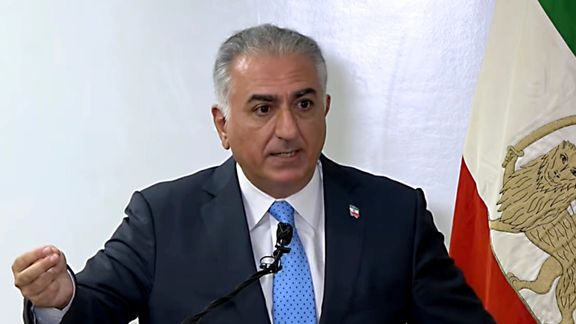Iran's Khamenei In Speech Tries To Defend His Embattled Rule

Iran’s Supreme Leader Ali Khamenei in a speech following popular protests in May accused “enemies” of triggering unrest to overthrow the Islamic Republic.

Iran’s Supreme Leader Ali Khamenei in a speech following popular protests in May accused “enemies” of triggering unrest to overthrow the Islamic Republic.
"Today, the enemies' most important hope for striking a blow at the country is based on popular protests... But the enemies' calculation is as wrong as many earlier ones," Khamenei said in his televised speech.
He also attacked “traitors” of Iranian descent who give “wrong advice” to the Americans about conditions the Islamic Republic faces.
Iranian opposition and activists in the United States and Europe have become much more vocal and organized in recent years, partly because of rising dissent inside Iran and bloody government crackdowns.
Khamenei was speaking on the death anniversary of Ruhollah Khomeini, the founder of the Islamic Republic and one day after Iran’s exiled crown prince Reza Pahlavi called for unity to overthrow the clerical regime.
Khamenei apparently could not help but see the political irony and implicitly warned that after the French Revolution, monarchy and decendants of the royal family returned to power in France.

The aging authoritarian ruler of Iran has in the past sharply condemned mass anti-government protests when they occurred in 2017-2018 and in November 2019, always seeing the hand of ‘enemies’ and calling ordinary protesters people who have been deceived.
Protests reignited in early May when the government of President Ebrahim Raisi scrapped billion of dollars in food import subsidies and overnight doubled and tripled prices for essential food items such as bread and cooking oil.
These protests were met with the overwhelming force of the Islamic Republic's security forces that have tens of thousands of specially trained troops to crack down on any show of dissent. But hardly the price protests had died down when on May 23 a 10-story building collapsed in the oil-rich Khuzestan province killing close to 40 people.

Accusations and evidence of corruption that had allowed the owner to ignore regulations and building codes ignited protests in several cities in the province and elsewhere.
A general perception of constant government failures, endemic corruption and a losing battle against economic chaos has gripped Iran in the past few months, exacerbated by events in May.
Tehran’s refusal to compromise in nuclear talks with the West and lift United States economic sanctions has added to the perception of a downward spiral. Even in government-controlled media warnings of a deteriorating situation can be seen daily, while outlets under direct government control or affiliated with the Revolutionary Guard try to present a rosier picture.
In what could be seen as a manifestation of Khamenei’s constant denials about the crisis facing his rule, he claimed that popular support for “the revolution” today is stronger than when the monarchy was overthrown in 1979.
Khamenei, however, implicitly acknowledged that the building collapse in Abadan was a disturbing event, although he attributed its highly negative impact on the public to the “enemy”. This was presumably a reference to Persian speaking media and television stations based abroad that beam news and information into Iran, contributing to public awareness and debate.
“Today, the enemy seeks to destroy [the reputation] of revolutionary officials,” Khamenei said, adding that “those responsible for sabotage must be punished.”